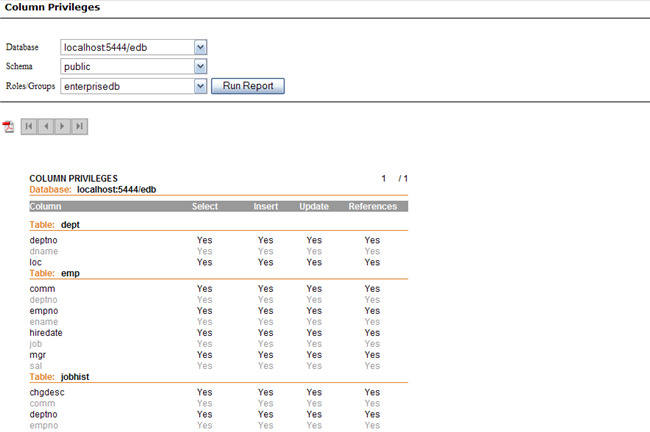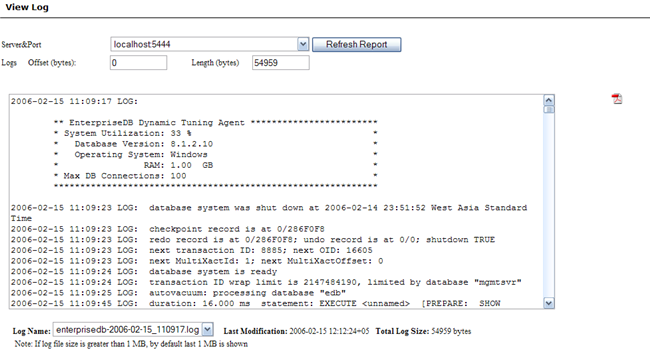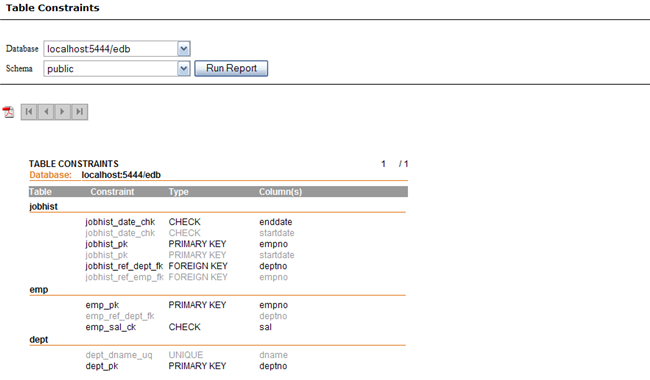 | Documentation |
|---|---|
20.6. SecurityThe following five reports are available under the Security section:
20.6.1. Column Privileges ReportThis report shows the column wise privileges that a specific Role or Group in your database has on all the columns within a specific table. The report is grouped according to the table that it belongs to, and the following privileges are shown for each Role/Group:
20.6.2. View DB LogsThis powerful functionality allows the users to browse through their database server log files. End users can view these log files on local as well as remote database servers. The database log files are the primary source of warnings, notices and errors.
If you only wish to read a specific part of your log file, you can specify values for the following values: Table 20-1. Log file parameters
The Log Name, Last Modification and Total Log Size are displayed at the bottom.
20.6.3. Constraints ReportThe purpose of this report is to show the names of all the constraints on the tables in your database and the respective columns that a particular constraint is on. Listed constraints can include
20.6.4. View Audit LogsEnterpriseDB provides us with the option of creating Audit Reports. EnterpriseDB database auditing allows database and system administrators, security administrators, auditors and operators to track and analyze database activities. These activities include database access and usage along with data creation, change or deletion. The auditing system is based on the configuration parameters defined in the postgresql.conf file. Using DBA Management Server, we can view these audit reports generated by EnterpriseDB. However to view audit reports you must enable the edb_audit settings in postgresql.conf file. For more information see Section 30.4.8. The following image displays an edb audit report:
The user can choose to view specific statements like Errors, DDL, DML, Connect and Disconnect. The above image shows the audit report with Show Errors option enabled only. 20.6.5. Show Settings ReportThe purpose of this report is to enable end users to view the name, value and description of almost all database runtime configuration parameters. All these parameters can be changed by editing the postgresql.conf file and some parameters can also be changed at runtime by issuing an ALTER DATABASE command, however any parameters changed via a ALTER DATABASE command are only valid for the current session.
|




